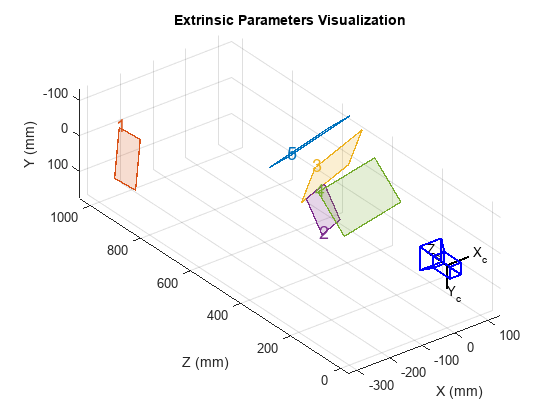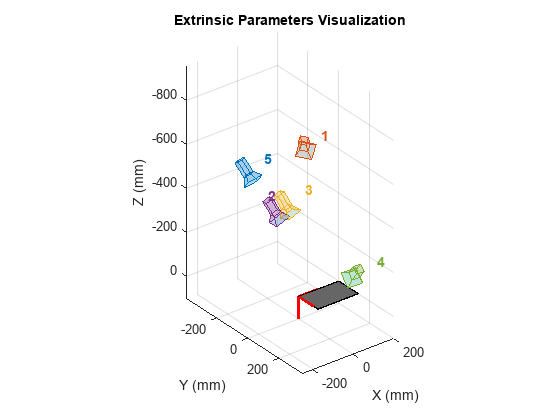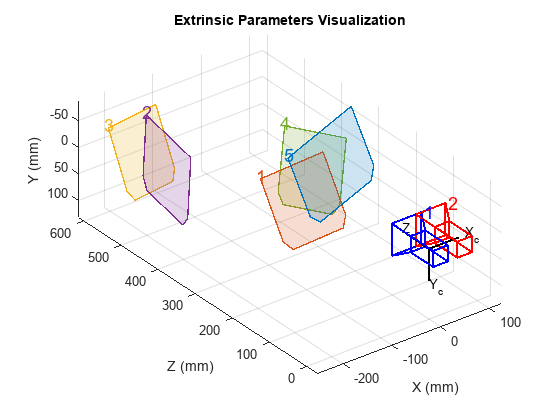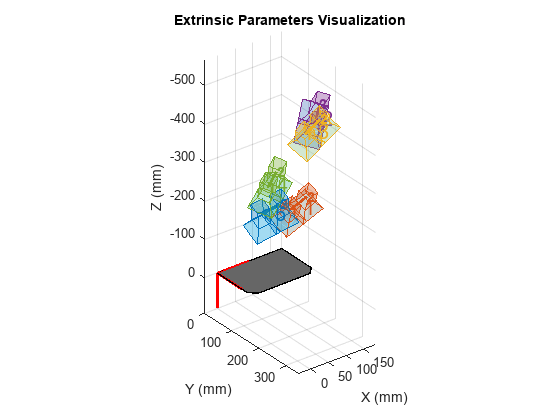showExtrinsics
Visualize extrinsic camera parameters
Syntax
Description
showExtrinsics( renders a 3-D
visualization of extrinsic parameters of a single calibrated camera, a calibrated stereo pair,
or multiple calibrated cameras. The function plots a 3-D view of the calibration patterns with
respect to the camera. The cameraParams)cameraParams input contains one of:
cameraParametersorstereoParametersobject which theestimateCameraParametersfunction returns.fisheyeParametersor object which theestimateFisheyeParametersfunction returns.multiCameraParametersobject which theestimateMultiCameraParametersfunction returns.
The showExtrinsics function shows the 3-D view of the calibration pattern as a convex polygon containing all the detected keypoints of the pattern in the original calibration image.
showExtrinsics(
displays visualization of the camera extrinsic parameters using the style specified by the
cameraParams,viewStyle)viewStyle input.
showExtrinsics(___,
specifies options using one or more name-value arguments in addition to any combination of
arguments from previous syntaxes. For example, Name=Value)HighlightIndex = [1,4] sets
the highlight patterns to 1 and 4.
Examples
Input Arguments
Name-Value Arguments
Output Arguments
Version History
Introduced in R2014a
See Also
Apps
Functions
estimateMultiCameraParameters|plotCamera|estimateCameraParameters|showReprojectionErrors|undistortImage|detectCheckerboardPoints|generateCheckerboardPoints|patternWorldPoints|detectPatternPoints





